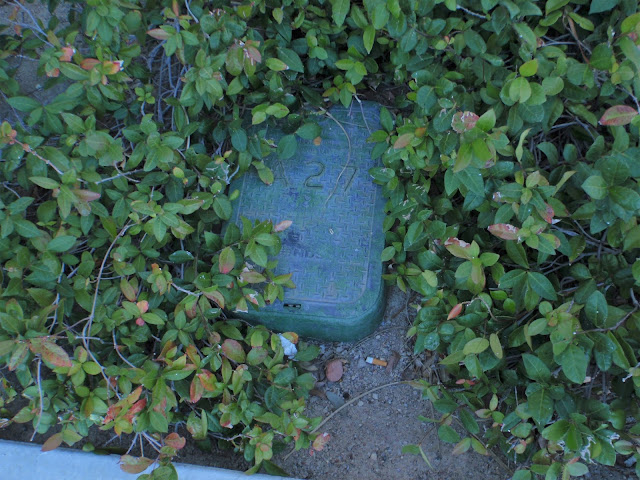Q. You mention woodchip mulch instead of rock on the soil surface for plants, but I find woodchips provide sanctuary to roaches and other pests that cause other problems. For this reason, I prefer to use rock.
A. The main value of woodchips applied to the soil
surface instead of rock is to provide “organics” back to the soil as they break
down or decompose. Rocks will break down, but they end up “mineralizing” the
soil instead of adding organics back to it. This “mineralizing” may take 3 to 5
years after planting, but some plants will become yellow during that time while
others do not. Some plants grow best when organics are continuously added back
to the soil instead of minerals.
 |
| Woodchips rot when moist and change the color of the soil from light brown or tan to dark brown. |
Insects like roaches and
pillbugs are “decomposers” that help break down woodchips into smaller pieces;
earthworms are frequently next in this process followed by microorganisms like
bacteria and fungi which further break them down into plant nutrients. If you
have a lot of woodchips applied to your landscape, expect to find a lot of
decomposers as well. These “nuisance critters” must be managed so they don’t
become a problem or they might.
 |
| Plastic irrigation boxes attract roaches and spiders when surrounded by woodchips and wet. An occasional insecticide spray in the box will control these nuisance insects. |
These
“nuisance critters” are attracted to water, food and warmth. Use your favorite
insect spray inside irrigation boxes and keep woodchips from two to 3 feet away
from the foundation of the home. Applied water shouldn’t be any closer to the
foundation than this anyway. Remember, plant roots follow where the water is
applied. No applied water, no root growth.
Your
home is inviting when the outside temperatures are uninviting. During late
spring and early fall, apply a “barrier spray” to repel these insects away from
your home. Your favorite barrier spray applied to the foundation of the home
helps repel “nuisance critters” when they need a change in temperature. The same
principle applies to strawberries and other soft fruit like tomatoes touching the
ground.

In the late fifties I used to do landscaping in Palm Springs and the lower desert (a little in the Mojave). I used a lot of rock. No plant problems.
ReplyDeleteChips and other organic "mulches" use up N in the process of decomposition. They burn. They turn gray anyway.
Soil is a bit different in the Eastern Mojave Desert. At less than 1/10 of 1% organics in the soil you will take your chances whether something will work on not using rock. In my opinion it is always better to use a little compost in the soil mix when planting to be on the safe side. Not much is needed for trees and shrubs but a little helps even if it is so called desert plant.
DeleteI started my study of ecosystem restoration in Apple Valley, CA in 1955. I dug up a 6" tall creosote bush that had one thick (pencil-sized) root still going down. I learned a lot from that. There was a man in 29 Palms, CA that had made a neat hedge out of some. Another restoration ecologist restored some desert roads by ripping the soil to create safe sites for seeds with the roughened surface. I have done the same in riparian areas. Keep it simple and observe, observe, observe.
Delete